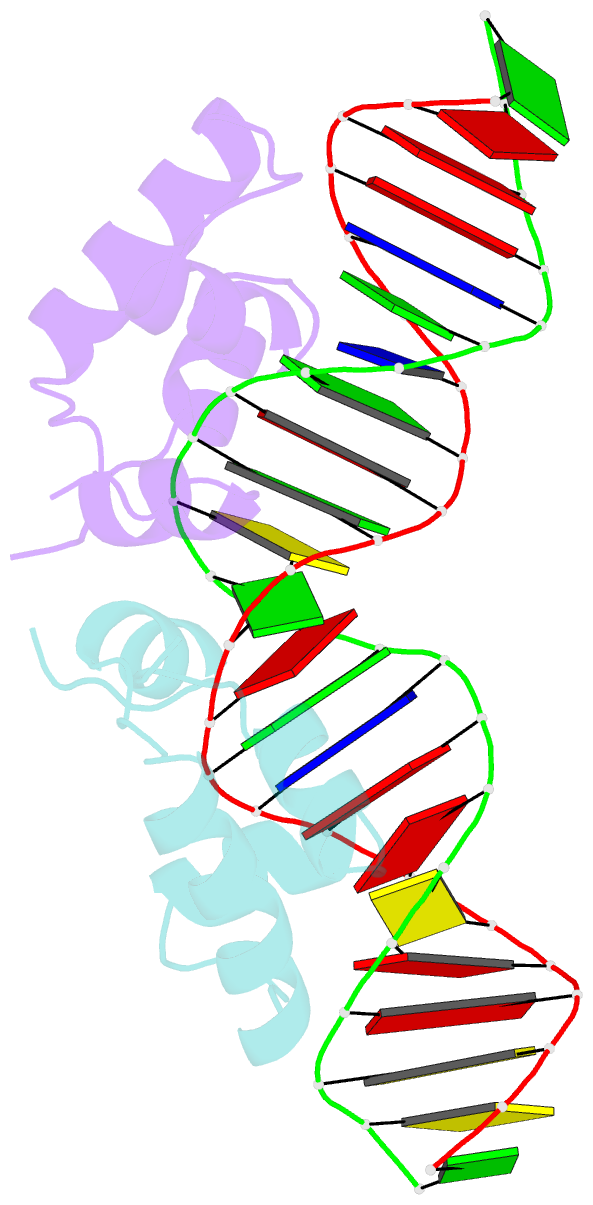Summary information and primary citation
- PDB-id
- 2kej; SNAP-derived features in text and JSON formats;
DNAproDB
- Class
- transcription-DNA
- Method
- NMR
- Summary
- Solution structure of a dimer of lac repressor DNA-binding domain complexed to its natural operator o2
- Reference
- Romanuka J, Folkers GE, Biris N, Tishchenko E, Wienk H, Bonvin AM, Kaptein R, Boelens R (2009): "Specificity and affinity of Lac repressor for the auxiliary operators O2 and O3 are explained by the structures of their protein-DNA complexes." J.Mol.Biol., 390, 478-489. doi: 10.1016/j.jmb.2009.05.022.
- Abstract
- The structures of a dimeric mutant of the Lac repressor DNA-binding domain complexed with the auxiliary operators O2 and O3 have been determined using NMR spectroscopy and compared to the structures of the previously determined Lac-O1 and Lac-nonoperator complexes. Structural analysis of the Lac-O1 and Lac-O2 complexes shows highly similar structures with very similar numbers of specific and nonspecific contacts, in agreement with similar affinities for these two operators. The left monomer of the Lac repressor in the Lac-O3 complex retains most of these specific contacts. However, in the right half-site of the O3 operator, there is a significant loss of protein-DNA contacts, explaining the low affinity of the Lac repressor for the O3 operator. The binding mode in the right half-site resembles that of the nonspecific complex. In contrast to the Lac-nonoperator DNA complex where no hinge helices are formed, the stability of the hinge helices in the weak Lac-O3 complex is the same as in the Lac-O1 and Lac-O2 complexes, as judged from the results of hydrogen/deuterium experiments.





